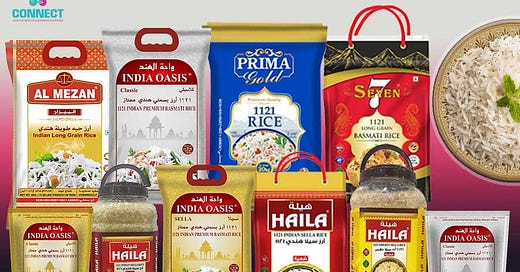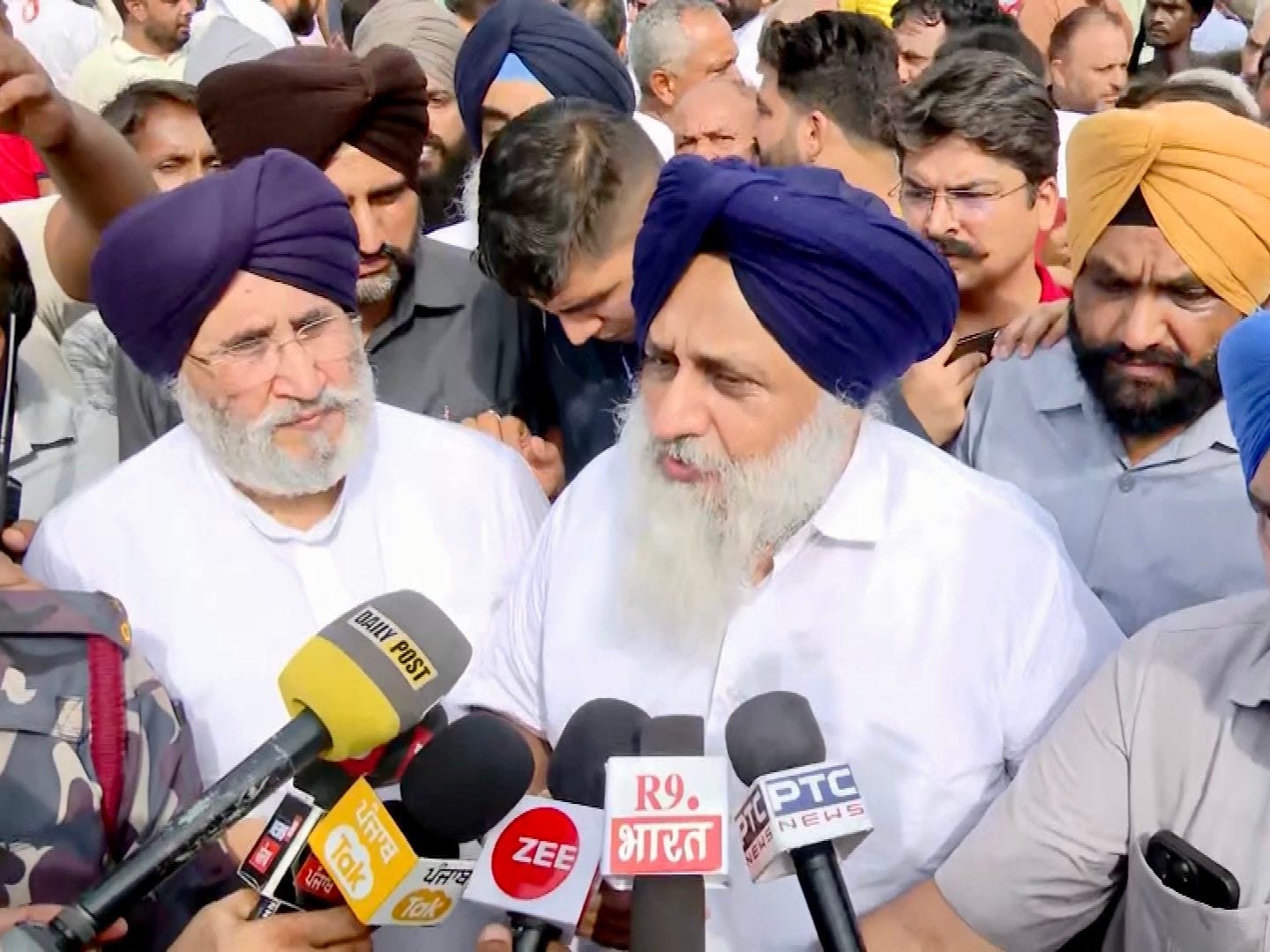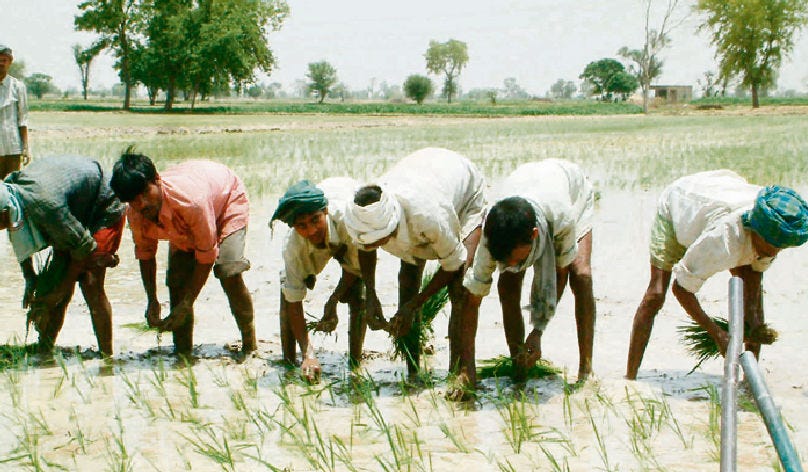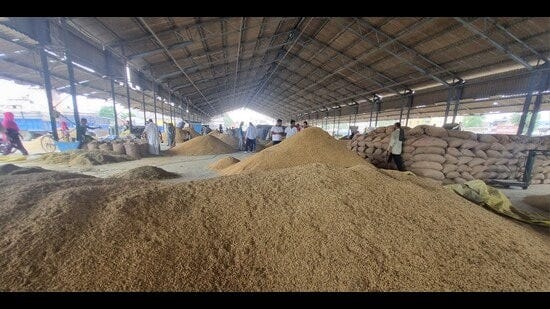Basmati Cultivation and Exports: The Ecology, Economics, and Politics of Punjab and the Centre
Fixing the Minimum Export Price (MEP) for processed Basmati, currently at $950 per tonne, is a complex and delicate balancing act for the Central Government.
Basmati Cultivation— towards diversifaction?
The Punjab Agriculture and Farmers Welfare Department has claimed a notable 12.58% increase in the area dedicated to Basmati cultivation this Kharif season, rising from 5.96 lakh hectares last year to 6.71 lakh hectares currently. Leading this surge, Amritsar district alone accounts for 1.46 lakh hectares. Despite paddy remaining the predominant crop for this season, the shift towards Basmati is not insignificant and aligns with a broader governmental strategy aimed at reducing water-intensive paddy cultivation, which has traditionally placed considerable strain on the procurement and storage capacities of the Food Corporation of India and other state agencies. Comparatively, the area under paddy cultivation— though still relatively very large— has seen a decrease from approximately 31.99 lakh hectares in the previous season to an estimated 30 lakh hectares this year, further underscoring the shift towards more sustainable agricultural practices.
Increased Area under Basmati
The increased cultivation of Basmati rice in Punjab exemplifies a conscious shift towards diverse cropping patterns, addressing both environmental sustainability and economic viability. Amritsar leads this initiative with 1.46 lakh hectares, followed by Muktsar with 1.10 lakh hectares, Fazilka with 84.9 thousand hectares, Tarn Taran with 72.5 thousand hectares, and Sangrur with 49.8 thousand hectares. These districts are at the forefront of Basmati cultivation, reflecting the state's commitment to reducing the dependency on water-intensive crops. Additionally, the adoption of Direct Seeding of Rice (DSR) techniques for traditional paddy— though still small in overall percentage terms— has surged by 46.5% incrementally, illustrating a marked move towards more water-efficient and labor-saving agricultural practices. This method not only conserves vital water resources but also cuts down on labour costs, aligning with Punjab's broader agricultural reform objectives.
Sukhbir Singh Badal's Demand
Meanwhile, Sukhbir Singh Badal, the beleaguered President of the Shiromani Akali Dal, has urged the Government of India to reduce the Minimum Export Price (MEP) of Basmati from $950 to $750 per tonne (video). Badal contends that this reduction is crucial not only to ensure better prices for Basmati farmers and enhance the competitiveness of Indian Basmati rice on the global stage but also a step towards the government's objective of doubling farmers' incomes. He emphasized that despite a bumper harvest, farmers are unlikely to see the benefits without a downward revision of the MEP. Additionally, he noted that restrictive export policies and full godowns have prevented Basmati exporters from purchasing the crop, further stifling farmer profits. Reducing the MEP, he avers, could significantly boost the international competitiveness of Indian Basmati, potentially leading to substantial income increase for the farmers.
Economic Rationale and Political Implications of MEP
The Minimum Export Price (MEP) for Basmati rice, initially set at $1,200 per tonne last year and subsequently reduced to $950, acts as a critical regulatory mechanism to stabilize domestic basmati rice supplies and prices. With impending Vidhan Sabha elections in Haryana, there are sympathetic considerations within the Government of India to further reduce the MEP to $750 per tonne. This measure is intended to curb the smuggling of cheaper non-basmati rice disguised, rather mislabeled, as the more expensive basmati variety, thereby ensuring price stability and food security, apart from protecting the brand equity of India’s unique produce. Such regulatory adjustments are particularly vital given the potential for agricultural output fluctuations, which may arise from environmental phenomena like El Niño.
Challenges and Prospects for MEP Adjustment
Although well-intended, the current MEP for Indian Basmati rice has arguably diminished its competitiveness on the international stage, especially in comparison to Pakistani Basmati, leading to a loss of market share and economic setbacks for Indian farmers. Market trends indicate that export prices frequently fall below the established MEP, suggesting that international buyers value the rice lower than the government's stipulated minimum. With India's rice stocks at an all-time high, there is significant industry pressure to lower the MEP to $800-$850 per tonne to align more closely with global market prices and mitigate losses due to spoilage. Sukhbir Badal appears to have capitalized on this sentiment, advocating for a further reduction in the MEP. As the government evaluates these potential adjustments, its primary aim is to balance domestic agricultural needs with the demands of the global market, thereby securing both the economic well-being of farmers and national food security.
20% Duty on Export of Parmal Rice
Additionally, the Government of India has imposed a 20% duty on the export of Parmal rice, a measure designed to discourage exports and ensure an adequate domestic supply of a foodgrain that is a crucial component of India’s food security programmes. This regulatory measure, often overlooked in discussions by agricultural experts and political figures, plays a crucial role in the broader discourse surrounding the Minimum Support Price (MSP) for various crops, including paddy. Our previous article addressed the tangible losses Indian farmers face due to these market control measures regarding exports by the Government of India, which subsequently became a focal point in debates about MSP amid ongoing farmer demands. Nonetheless, despite the shifting agricultural practices and the growing emphasis on Basmati cultivation, there is still mounting pressure from diverse stakeholders to remove this duty, aiming to provide farmers with greater access to international markets and enhance their economic opportunities.
Revisiting Previous Discussions
With the upcoming Haryana Vidhan Sabha elections, the dynamics of Basmati cultivation and export pricing are poised to play a significant role in the public discourse as well as in the political rhetoric. Such policy adjustments, including those related to the Minimum Export Price (MEP) and export duties, are deeply intertwined with the political landscape and imminent elections, influencing both farmer vote banks and the economic well-being of local farmers. It's against this backdrop that our previous article gains relevance, as it explored the complexities of MEP policies, such as under-invoicing by exporters and the generation of black money to be stashed in foreign tax havens. This discussion below— summarised from our previous article—sheds light on the broader economic and political ramifications of agricultural policies as electoral agendas come to the forefront.
Summary of our Previous Article on Basmati Export Policy and MEP
a.) Government Policy vs. Rice Exporters' Lobby
Our article published a year ago initially explored the tension between the rice exporters' lobby, equipped with a robust PR campaign, and the Government of India's policy decisions. The government had kept the Minimum Export Price (MEP) for Basmati rice at $1,200 per tonne, a strategy supported by retired officers from the Directorate of Revenue Intelligence (DRI). This policy was designed to combat the widespread issue of under-invoicing, which not only harms domestic pricing mechanisms but also facilitates substantial financial discrepancies benefiting exporters at the expense of the nation’s economy.
b.) Impact on Farmers and Market Dynamics
Further, the article discusses the ironical situation where Basmati exporters, despite appearing as advocates for farmers' interests, actually engage in practices that depress Basmati prices in local markets. This suppression is achieved by setting a baseline export price that discourages fair compensation for farmers in Punjab and Haryana, thus skewing the market against the very producers they claim to support, though overt and covert cartelisation.
c.) Profit Margins and Government's Role
The discussion extends to the disproportionate profit margins enjoyed by Basmati exporters. It argues that these exporters exploit both the pricing and tax systems to siphon significant revenue abroad, maintaining high profitability while constraining the financial dividends of Indian farmers. The government is urged to implement robust regulations to ensure that the profits from Basmati exports are equitably distributed and that fiscal practices are transparent and fair to all stakeholders.
d.) Summing Up and Recommendations
The article concludes with a cautionary note for politicians and a call for analytical scrutiny by government and independent think-tanks. It emphasizes the necessity of understanding the real profits that exporters make from international Basmati sales, urging a balanced approach to policy that genuinely protects farmer interests while promoting fair trade practices.
For those seeking a deeper insight into the dynamics of Basmati rice exports and government interventions, the complete article can be accessed through the link provided in the footnote below1.
Conclusion: Strategic Policy Adjustments in Basmati Cultivation
a.) Transition Towards Sustainable Agriculture
The expansion of Basmati cultivation in Punjab is a significant step towards more sustainable agricultural practices, showcasing a commitment to environmental stewardship and efficient water resource management. This strategic shift underlines the need for policies that support both ecological and economic sustainability in the region.
b.) Complexity of Minimum Export Price (MEP)
Understanding the MEP involves recognizing it as more than a regulatory measure; it is a necessary tool that must be managed with a keen sense of realism and rationality. The Government of India must set the MEP thoughtfully, taking into account the international market prices, domestic production costs, and available storage capacities to maintain balance and fairness.
c.) Dynamic Adjustment of Export Policies
Export policies, particularly those concerning MEP and export duties for parmal rice, require dynamic adjustments to align with global economic conditions and domestic agricultural realities. These adjustments are crucial to prevent the economic disenfranchisement of farmers, who are most vulnerable to these policy shifts.
d.) Securing Economic Interests of Stakeholders
A well-calibrated MEP is essential for protecting the interests of all stakeholders, especially farmers. By ensuring that the MEP aligns with global market trends and local production realities, the government can prevent market distortions that lead to losses for farmers, supporting the long-term profitability of Basmati cultivation and contributing to national food security and domestic stability.
Basmati $1200/tonne Minimum Export Price: Why is the Exporter Lobby Squeaking?
The New Basmati Export Benchmark: Unreasonable or Justified?








